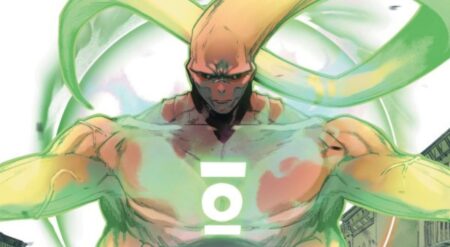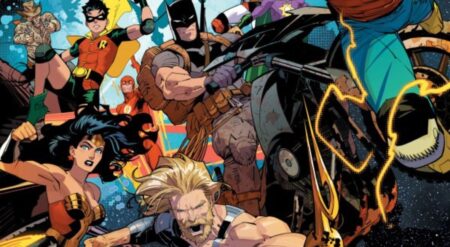
The Joker #5 is published by DC Comics, written by James Tynion IV, Sam Johns, and Mathew Rosenberg, with art by Francesco Francavilla and Sweeney Boo and letters by Ariana Maher and Tom Napolitano. Putting all the tension of the last issue on hold, this book steps away from the current events of Gordon’s dealings with the Joker to take a look at events that followed shortly after the first time the Joker was apprehended.
Throughout the previous issues of The Joker, the story has focused heavily on the presence the Joker has within Gordon’s mind. Due to the many atrocities the Joker has committed against Gotham, as well as the heinous acts that he has committed against Gordon and his family personally, it has been established that the villain has become a bit of an obsession for the former police commissioner over the years. This concept gets taken to a whole new level in The Joker #5.
This issue’s main story exclusively looks back at some of Gordon and Joker’s earliest interactions. And from what this issue would tell us, Gordon has been obsessed with Joker since the first time they captured him. It would seem that Gordon always knew how dangerous the Joker is and was trying to have every precaution taken with the villain’s stay at Arkham, despite no one else believing that there could be any real danger.
The levels that this book takes Gordon’s fixation to are bizarre even by the standards of a medium focused on spandex-clad vigilantes fighting maniacal villains bent on world domination. How Gordon could have ever managed to solve another crime, let alone not land himself in Arkham himself with how obsessed he is, goes beyond the ability to accept. This depiction of Gordon takes him from being the stalwart ally of Batman to an overwrought obsessive that is one alarm siren away from a heart attack.
The art in The Joker #5 delivers its story in a style that recreates the look of older comics. This helps create the feeling of the story being from the past instead of a new addition to the continuity. Both Francavilla’s lines and colors do a great job of truly selling the story’s place in the past.
This book’s secondary story follows Bluebird as she attempts to seek out the mysterious person from Punchline’s past. Seeming to be the only good lead to who Punchline truly is, Bluebird prepares to go to some great lengths to find this individual.
The best part of The Joker #5’s secondary story is its momentary step away from Bluebird’s investigation to examine how Punchline’s media presence affects everyday individuals and how they view each other. With some becoming infatuated with Punchline, it creates plenty of opportunity for relevant social discourse among everyday Gothamites.
The visual design of this story contrasts sharply with the look of the main narrative. Bathed in purples and greens, artist Boo delivers a modern look and color scheme that instantly stands out against the more aged look of Francavilla’s preceding work.
Wrapping up our look at The Joker #5 is the letter work. Both Napolitano and Maher deliver solid jobs lettering their respective stories. The dialogue is always well placed and is kept clear of the art.
So while some elements of The Joker #5 continue to deliver, the main narrative of this book hits a low point. While I appreciate the attempt to emphasize the Joker’s importance to Gordon, this book does so at the expense of one of Batman’s most trusted allies.
The Joker #5 is available now wherever comics are sold.
The Joker #5
TL;DR
So while some elements of The Joker #5 continue to deliver, the main narrative of this book hits a low point. While I appreciate the attempt to emphasize the Joker’s importance to Gordon, this book does so at the expense of one of Batman’s most trusted allies.






